
Yamaha wasn’t afraid to break convention with its YXZ1000R, a vehicle it classifies in its own “pure sport” side-by-side category because of the unique driver experience it provides thanks to its clutch pedal and manual shift lever. When we first drove the YXZ we praised it for its performance and originality, but more importantly we loved the connection it provided between driver and machine.
Yamaha’s newest model in the YXZ family, the YXZ1000R SS (or Sport Shift), is actually removing part of what made the first YXZ so unique – it’s clutch pedal and manual shifter – and instead replaces them with paddle shifters. So instead of three pedals on the floor of the SS there are two. While this may seem like a reaction to the YXZ’s clutch being too complicated, it’s not. Yamaha says the SS has been in the works for two years, long before the success or failure of the first YXZ was even realized.
Get the Flash Player to see this player. |
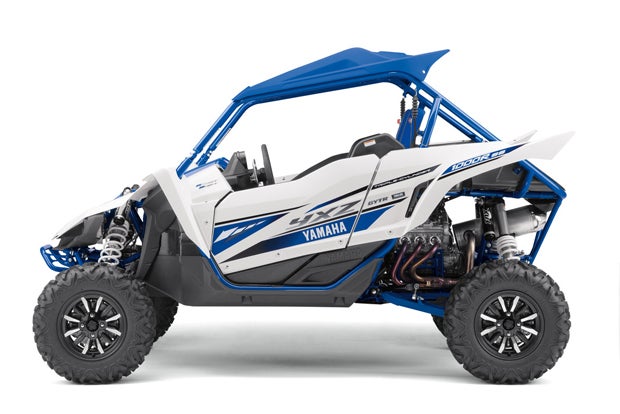
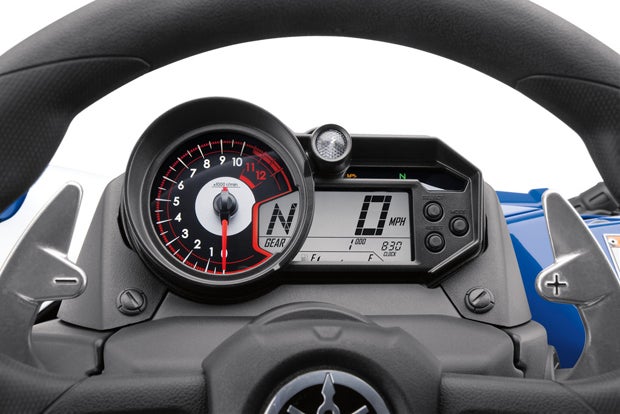
The SS version of the YXZ isn’t intended to make the vehicle any less sporty. In fact, Yamaha still feels the SS offers that same “pure sport” rider/machine connection with its paddle-shift technology. The removal of the clutch-shifter combination simply allows drivers not comfortable with a manual transmission a little less complication. The paddle shifters don’t suddenly dumb down the machine, and during testing Yamaha went back to the drawing board a number of times to tweak with the features, shift feel and overall design of the shifters to make sure it was just right. For example, the paddle shifters actually started out connected to the steering wheel, but Yamaha testers and engineers quickly realized this wouldn’t work, and instead they mounted them just behind the steering wheel so they stay mounted in the same location no matter how cranked over the steering wheel may be at any given time.
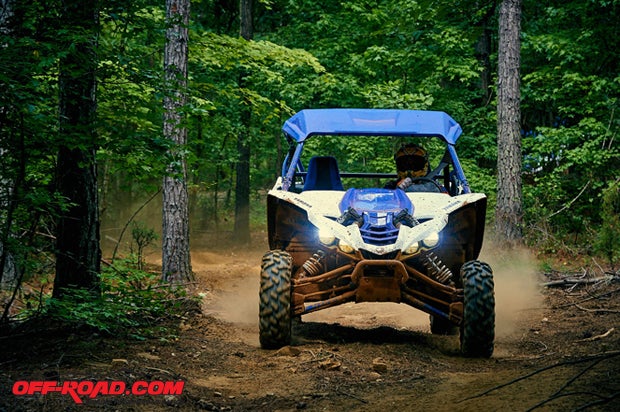
Yamaha relies on its Yamaha Chip Controlled Shift (YCC-S) technology for the shifters, which serve as an automatic clutch system that works in place of the clutch pedal. The shift lever controlling the six-speed sequential gearbox of the manual YXZ is replaced on the SS with a lever to control operation modes drive (D), neutral (N) and reverse (R), the last of which will feature an audible warning to remind the driver he or she is in back-up mode. Yamaha designed the shifter to be somewhat bump proof as well, since it requires the driver to hold the lever in the intended position for a second or two so that accidental bumps during driving don’t change drive mode.
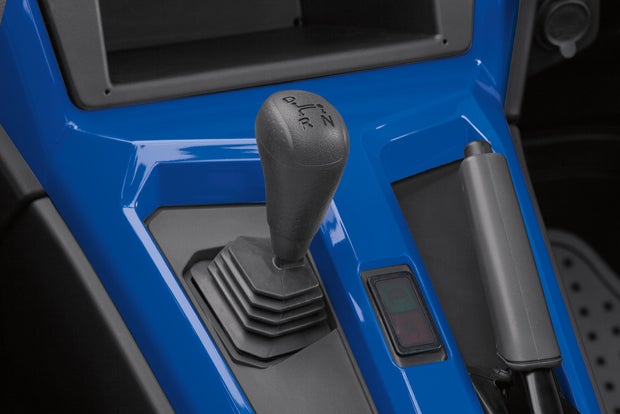
The paddle shifters, described to us by Yamaha as offering high-performance shifting, are fairly straightforward in operation: the right paddle upshifts and the left paddle downshifts. An automatic downshift option will take the vehicle down into first gear when it stops (or comes close to it), and we’re happy to note the system isn’t obtrusive and downshifts when not needed. We learned first hand at our press launch ride at Big Buck Ranch in South Carolina that the downshifts actually are an asset and not a hindrance. Our purpose-built course, which featured roughly 40 percent of the same track used for the Big Buck GNCC race, consisted of tight trails that weaved in and out of dense forest. We noticed the downshift feature most when cresting hill climbs while in second or third gear, and if we forgot to downshift as we slowed the SS would do so to keep us in the proper power range. We’re also happy to report it’s not a fully safeguarded system, as the SS has auto downshift technology but it will not ever upshift the machine for the driver.
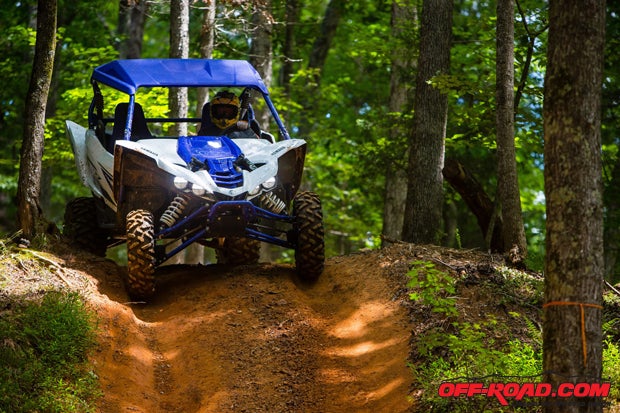
Another very intriguing new feature, especially for those looking for an edge when drag racing their buddies, is the new Launch System. When stopped with a foot on the brake pedal, the driver pulls both paddles back until an indicator light on the dash turns green (blinking green means you did something wrong), and from there the driver takes the foot off the brake and revs the engine to above 5,000 rpm, and a release of the paddles will rocket the SS off the line (check our video for a visual example). It’s a really cool feature that we found ourselves using the more comfortable and confident we became with the machine (or pretty much when we had an open area to let loose).
Although Yamaha is making things a little simpler by removing the clutch pedal, the paddle shifters on the SS are intended to feel as close as possible to a manual machine. In fact, Yamaha did not want to make seamless shifts or offer a smooth gear-to-gear transition like a CVT transmission; instead, the driver feels each gear change in the SS to retain that “pure sport” DNA so important to Yamaha on its YXZ models. Yamaha said it worked to make the shift points as quick as just about any human on the planet (excluding of course a handful of professional racers). Although we couldn’t exactly confirm the claim, nor did we have a standard manual-shift YXZ to compare with, the shifts are crisp, precise and don’t ever impart the feeling a computer inside the machine has more control over shifting than you.
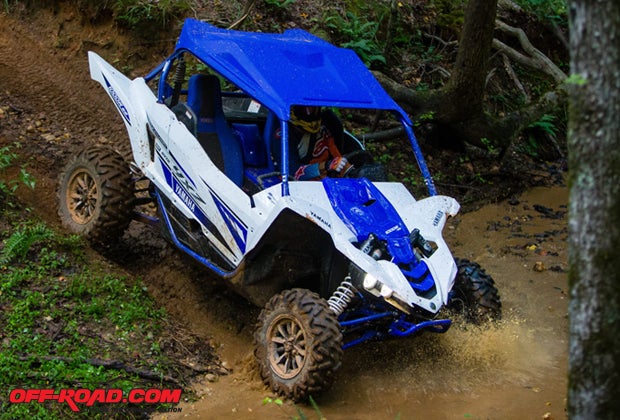
Since the new SS is designed to be as close to manual machine as possible, one of the safeguards built into it is the Half Clutch Indicator that will show the driver when the machine in in a half-clutch situation via a green light on the dash. For most, it’s something you’ll notice at first but you’ll quit paying attention to unless there’s constantly a green light illuminated on the dash, but it’s there in case a driver hops in and is operating consistently between gears to notify them of the added wear they are putting on the machine (especially useful if a buddy is driving it for the first time).
The YXZ1000R SS doesn’t look all that much different than the first YXZ other than a graphic distinction, and inside the cabin the tachometer features a black background to denote it’s an SS. On the trail, the YXZ SS is pretty much right in line with the feel of the first YXZ. The SS is powered by Yamaha’s aggressive-sounding 998cc triple that doesn’t redline until 10,500 rpm. The SS is also built on the same low-COG chassis that offers 13 inches of grounds clearance despite offering a seat height that’s close to 3 inches lower than the Polaris RZR.

Since our first drive of the YXZ was in the Glamis sand dunes, our venture through the forest in the YXZ SS gave us an entirely different test of the Fox Podium RC2 shocks. The 16.2 inches of front travel and 17 inches of rear travel proved to be even more valuable on the tree-rutted terrain of Big Buck Ranch. Having the option to adjust the preload, rebound and high- and low-speed compression on the piggyback-reservoir Fox shocks can be very valuable when switching to different terrain as well. As the day wore on, our confidence grew on the tight trails, and the value of these performance-minded shocks, and the four-corner disc brakes, proved their worth a number of times over. Other than stabbing at the non-existent clutch pedal a few times early in the day, we eventually grew extremely comfortable with everything about the SS, especially the paddle shifters.
The YXZ1000R SS provides some added mass appeal for sure, but it’s in no way an inferior machine to the original YXZ. The fact of the matter is, the SS makes it far more comfortable for novice drivers or those unfamiliar with a clutch pedal the option to enjoy the YXZ from the driver’s seat. The SS is still a performance machine and it can tackle trails with supreme confidence thanks to its performance suspension and low-COG chassis design. Yamaha essentially expanded its YXZ lineup with a new machine that is more accessible for the masses but doesn’t sacrifice the sporty ride of the original.

Pricing for the 2017 YXZ1000R starts at $20,599 for the Orange and Black model, while the Yamaha Blue model runs $20,799. The Special Edition (SE) model, which comes with beadlock wheels and a unique Matte Black and Red paintjob (and a few other goodies), is priced at $22,399. For more information, head over to http://www.yamaha-motor.com/.


 Your Privacy Choices
Your Privacy Choices